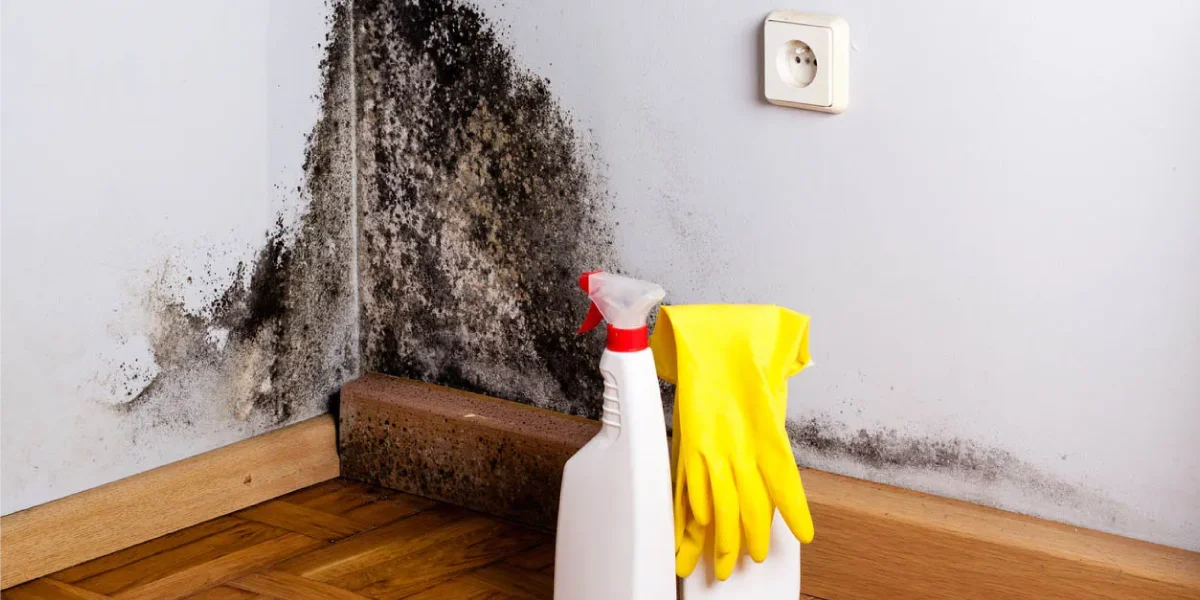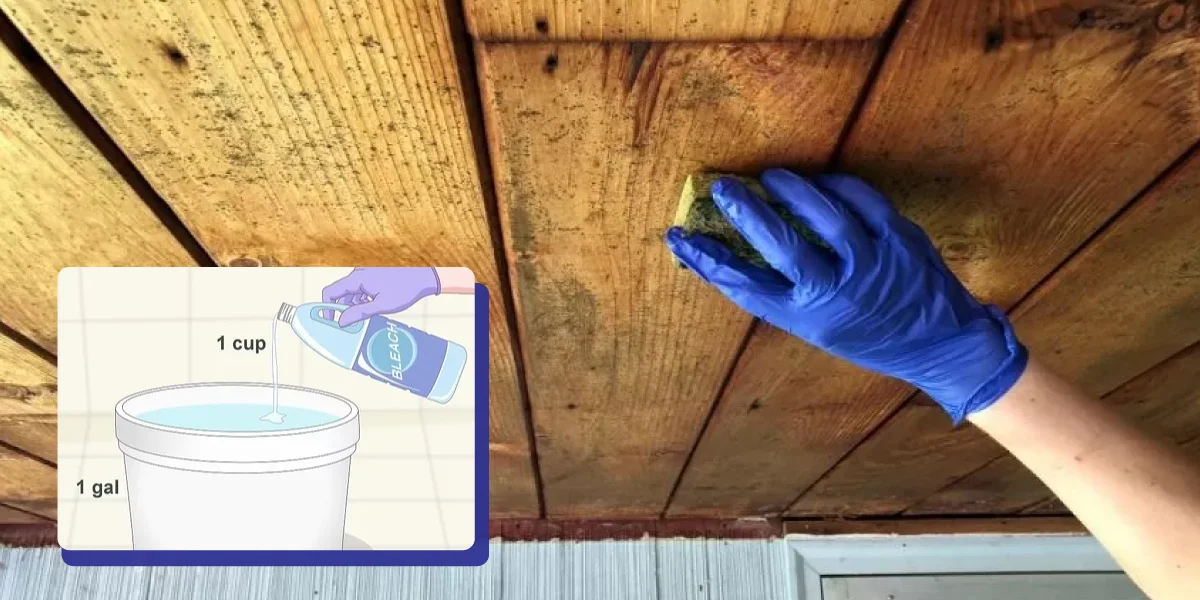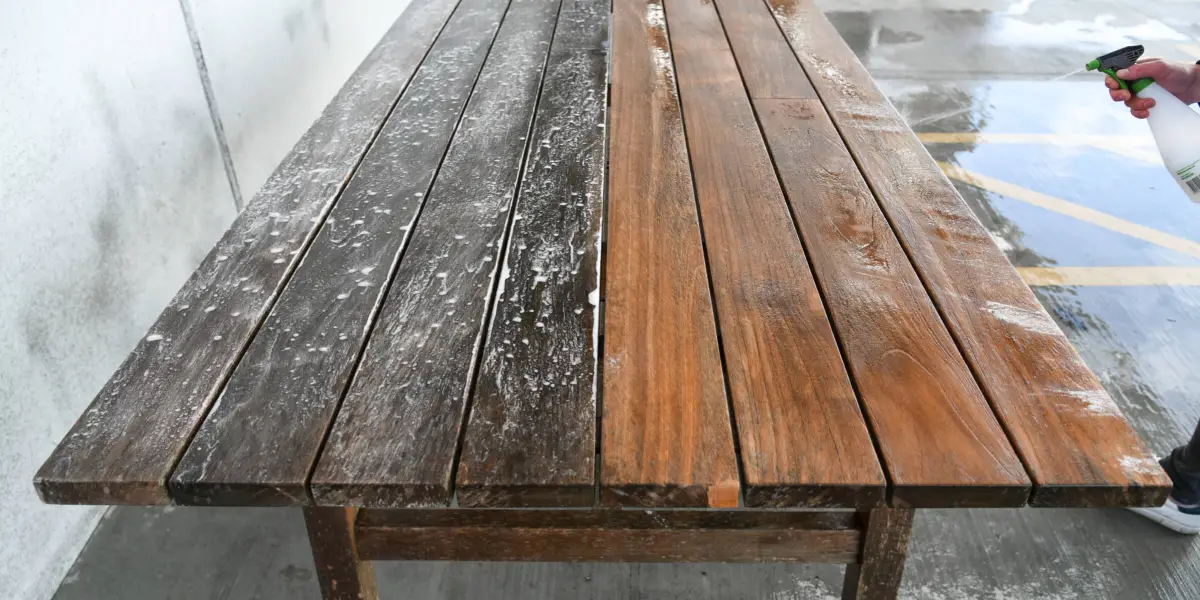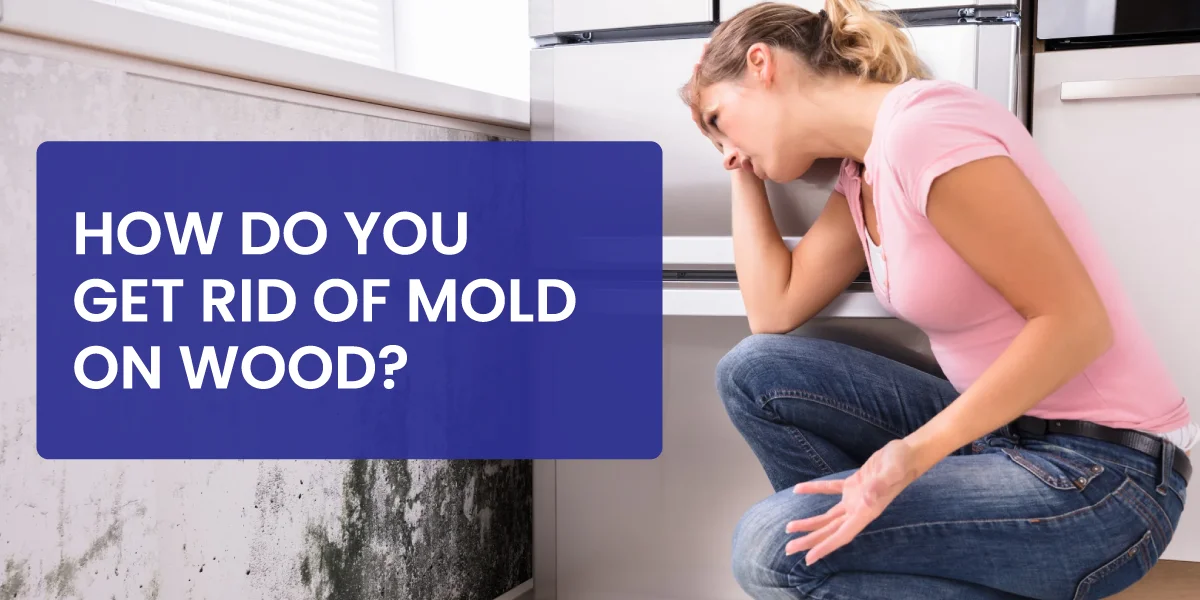Mold growth on wood surfaces is a common issue that can arise from various factors, including high humidity, water damage, and poor ventilation. If left untreated, mold can cause significant damage to the wood, compromise indoor air quality, and pose health risks to occupants. Effective mold removal requires a thorough understanding of the process, the right cleaning solutions, and proper safety precautions.
What kills mold on wood?

Several household products and solutions can be used to kill mold on wood, depending on whether the wood is finished or unfinished. Distilled white vinegar is effective for both types, and can be used undiluted or mixed with equal parts water for tougher stains.
Baking soda is suitable for finished wood and can be mixed with water and detergent to create a paste. For unfinished wood or tougher stains, bleach can be used, but it should be diluted with water (1 cup of bleach per gallon of water) and mixed with detergent if necessary.
Sodium borate (Borax) is also effective for unfinished wood, and can be mixed with water (1 part of sodium borate to 16 parts of water). Additionally, rubbing alcohol can be used on unfinished wood to kill mold.
Commercial mold removal products are also available, and often contain surfactants that can penetrate wood fibers, making them suitable for both finished and unfinished wood.
Cleaning Process

This guide provides a comprehensive overview of how to get rid of mold on wood, covering essential safety measures, cleaning techniques, and additional tips to ensure successful mold remediation and prevent future growth. Whether you are dealing with a small patch of mold or a larger infestation, this step-by-step guide will help you tackle the problem safely and effectively.
Choose the Right Cleaning Solution:
For finished or painted wood, use mild cleaning solutions such as distilled vinegar, baking soda mixed with water and detergent, or commercial mold removal products.
For unfinished wood, stronger solutions like bleach diluted with water and detergent, sodium borate (Borax) mixed with water, or commercial products with surfactants may be necessary.
Apply the Cleaning Solution:
Use a soft-bristled brush or sponge to apply the solution to the moldy area. Avoid over-saturating the wood.
For tougher mold stains, you may need to use a stronger solution like bleach, but always dilute it with water (1 cup of bleach per gallon of water) and ensure proper ventilation.
Scrub the Surface: Gently scrub the moldy area with a soft-bristled brush or sponge. Avoid using harsh or abrasive cleaners that can damage the wood finish.
Wipe Away Residue: Use a clean, damp cloth to wipe away the mold residue. Do not rinse the cleaned surface with water to prevent spreading mold spores.
Dry the Wood: Allow the wood to dry completely. Use fans or dehumidifiers to speed up the drying process.
Repeat if Necessary: If mold remains after the first cleaning, repeat the process with a stronger cleaning solution if necessary.
Sand if Needed: If mold or stains persist, you may need to sand the area. Wear protective gear and use a vacuum with a HEPA filter to contain the sawdust.
Clean Up: Dispose of moldy materials properly, clean your tools, and wash your clothes separately to prevent spreading mold spores.
Can moldy wood be saved?

Moldy wood can often be saved if the mold infestation is not too severe and if proper cleaning and drying techniques are used. Here are some key points to consider:
- Assess the Damage: If the mold has penetrated deeply into the wood, causing it to become crumbly or spongy, it may be too damaged to save. However, if the mold is primarily surface-level, there is a good chance of salvaging the wood.
- Cleaning Techniques: Use gentle cleaning solutions such as distilled white vinegar, baking soda, or mild dish detergent mixed with water to remove mold from the wood surface. Avoid using harsh or abrasive cleaners that can damage the wood finish.
- Drying: Allow the wood to dry completely after cleaning. Use fans or dehumidifiers to speed up the drying process and prevent further mold growth.
- Sanding: If mold or stains remain after cleaning, sanding the wood down past the affected area can help remove the mold entirely. However, this should be done with caution, wearing protective gear and using a vacuum with a HEPA filter to contain the sawdust.
- Preventive Measures: To prevent future mold growth, apply a mold-resistant finish or sealant to the wood once it is dry and clean. Regularly inspect and maintain wood surfaces to keep them dry and clean.
By following these steps and taking necessary precautions, it is possible to save moldy wood and prevent future mold growth. However, if the mold infestation is extensive or if you are unsure about how to proceed, it may be best to consult a professional mold remediation service.
Summary
Moldy wood can often be saved if the infestation is not too severe. To salvage moldy wood, assess the damage, clean the surface with gentle solutions, dry the wood completely, and sand if necessary. Applying a mold-resistant finish or sealant can help prevent future mold growth. However, if the mold is extensive or you are unsure about how to proceed, it may be best to consult a professional mold remediation service.


